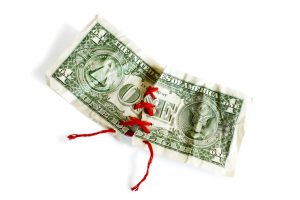Monetary Failure Is Becoming Inevitable
The comments below are an edited and abridged synopsis of an article by Alasdair Macleod
There is an unpleasant conjunction of events beginning to undermine government finances in advanced nations. These events combine a long-term trend of rising welfare commitments with the increasing certainty of a global-scale credit crisis, leading to the peak of the credit cycle and increasing trade protectionism. We see the latter already undermining the global economy, catching both governments and investors unaware.

Few seem to know that an economic and systemic crisis will occur at a time when government finances are already in a precarious position. However, the consequences are unthinkable for the authorities, and for this reason it is certain such a downturn will lead to a substantial increase in monetary inflation. The scale of the problem needs to be grasped in order to assess how destructive it will be for government finances and, ultimately, state-issued currencies.
Up for discussion: the credit cycle is now on the turn; the dawning of monetary inflation on the general public; and anticipating a crack-up boom.
As the credit crisis drives monetary expansion into overdrive or leads into a hyperinflationary slump, people will begin to discard currency in favour of goods. Minimal cash liquidity becomes the desired position. It can rapidly lead to the final short-lived boom that marks the death of an unbacked fiat currency, when it dawns on the general public that their government’s currency might be worthless. As the conviction of it grows, the pace at which it is dumped for anything of use the public can get their hands on increases exponentially (i.e., the German mark during WWII).
So long as the alternative of owning physical gold and silver exists, it is not necessary to stockpile necessities unless disruptions to supplies are anticipated. In a slump, the prices of goods will decline measured in sound money. This was impressed upon Keynesian inflationists by the experience of the early 1930s, when the price of nearly everything fell when compared to gold. When gold and silver become more desirable than owning goods, their purchasing power increases, while that of fiat currencies declines.
If, in the wake of the next credit crisis, the economic conditions of the 1930s return, those that use gold and silver as money will see the prices of their consumer staples fall, so there should be no hurry to hoard them.
